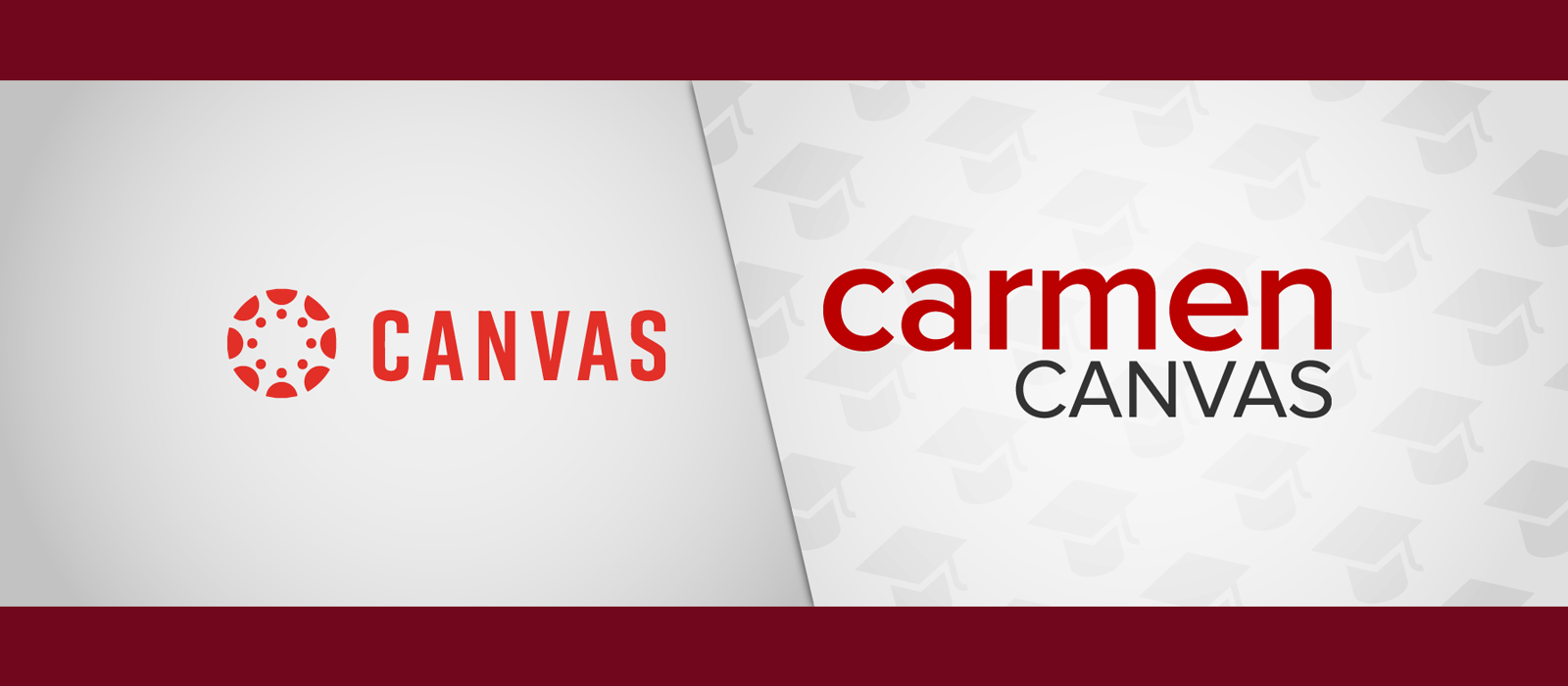Accessible Course Content in CarmenCanvas

Introduction
CarmenCanvas is Ohio State’s learning management system (LMS) and was deployed for student and faculty use in spring 2016.
The accessibility of an individual’s experience in CarmenCanvas depends on two things: the accessibility of the platform itself, and the accessibility of the content placed within CarmenCanvas.
This page contains information about the accessibility of the CarmenCanvas platform and has links to documentation about how to create accessible content within your course.
Those who create and share content in CarmenCanvas have a responsibility to ensure that content is created and provided in a way that makes it accessible to everyone in the course.
Organization and Consistency
- Having a well-organized course is key to accessibility as well as usability
- Page layout should be simple, clean, and uncluttered
- Navigation should be clear and consistent from page to page
- Pages should have unique and descriptive titles (ex: Module 1 Quiz 1 of 3: World History)
- Be consistent with naming conventions
- If reading material is referred to by title in the syllabus, be sure you use the same name throughout course
- Recommend using the Ohio State Syllabus Template
Accessible Microsoft Documents
Guidelines in this section are about documents with editable text, not documents with scanned text
- Scanned text documents are not accessible and not recommended
- Create your document in the latest available version of Microsoft Word and run the accessibility checker in Word
- To learn more: Creating Accessible Word Documents
Use excel for organizing tabular data
- Avoid more than one row or column of blank cells between ranges of data
- Ideally place different data ranges in separate excel tabs to make it easier to navigate between them
- To learn more: Organizing data in Microsoft Excel
- Ideally place different data ranges in separate excel tabs to make it easier to navigate between them
- Do not include lengthy sentences, images, etc. into data cells
- To learn more: Creating Accessible Excel Spreadsheets
- Images should have alternate text descriptions
- Ensure that the reading order of items on slides is appropriate for the meaning being conveyed
- Slide animation/transitions can cause issues with assistive technology and are not recommended
- It is not recommended that PowerPoint is used to create flyers. Use Word instead
- To learn more: Creating Accessible Power Point Presentations
Portable Document Format (PDF) Files
- Making existing PDF files accessible is labor intensive and requires technical knowledge
- Image based PDFs are either inaccessible or time consuming to fix
- Alternatively, a PDF’s content can be added as a page within Canvas
Created with MS Word
- Begin by creating your document in the latest available version of Microsoft Word and run the accessibility checker in Word
- Correct all issues
- Save your document by exporting it as a pdf
- Make sure when saving to check the “Best for electronic distribution and accessibility” check box
- Correct all issues
Created with MS PowerPoint
- Begin by creating your document in the latest available version of Microsoft Power Point
- In PowerPoint, the Accessibility Checker runs automatically in the background when you're creating a presentation
- If the Accessibility Checker detects accessibility issues, you will get a reminder in the status bar
- To manually launch the Accessibility Checker, select Review > Check Accessibility and run the accessibility checker
- Correct all issues
- Save your document by exporting it as a pdf
- Make sure when saving to check the “Best for electronic distribution and accessibility” check box
- It is recommended that fliers not be made in PowerPoint; Use MS Word instead
- Correct all issues
- Using Adobe Acrobat Pro DC, run the accessibility checker and correct all issues: reading order, alt text, tables, language, title, etc.
- To learn more: Accessibility Check with Adobe Acrobat
Canvas Instructor Resources
Canvas is a capable LMS with a wide array of tools available within it for the instructor.
In addition to desktop browsers, Canvas works well within Android and iOS operating systems.
Students and instructors can access course Content on mobile devices using Canvas.
To learn more:
